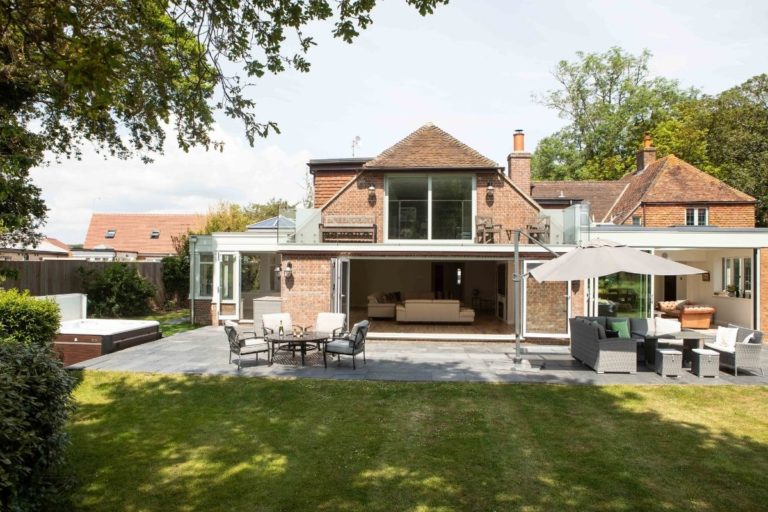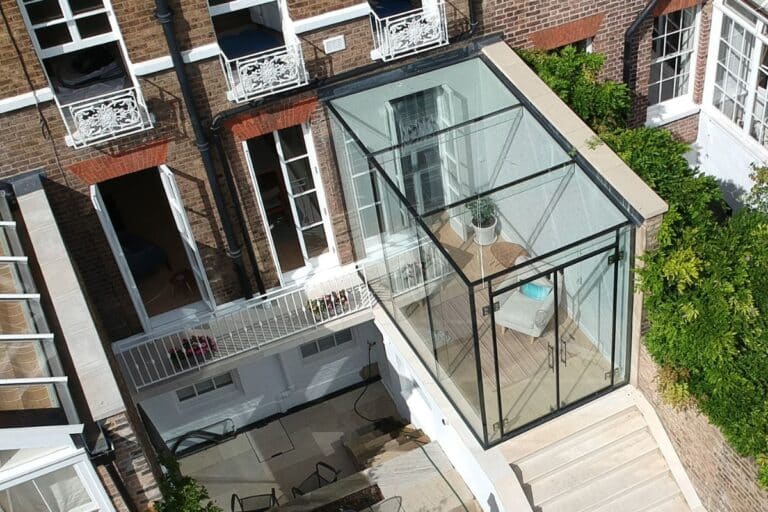Do You Need Planning Permission for a Conservatory?
One of the most common questions we get is about permitted Development (PD) Rights for conservatories and other glass extensions. Many homeowners want to avoid the hassle and cost of applying for planning permission.
Fortunately, in many cases, you won’t need planning permission if your conservatory meets PD criteria. However, this depends on several factors, including size, location, and previous extensions.
Permitted Development Rights
How Big Can a Conservatory be Without Getting Planning Permission?
Permitted Development allows you to build a conservatory up to a certain size without needing planning approval.
- 6 metres from the original rear wall for semi-detached and terraced homes.
- 8 metres from the original rear wall for detached houses.
However, the total extension allowance applies to the entire property, not just the conservatory. If your home has already been extended, your permitted size may be reduced.
What is Permitted Development?
Permitted Development allows homeowners to make improvements to their property without applying for planning permission. However, the work must meet specific government guidelines.
In recent years, these rules have become more flexible, making it easier to add glass extensions. For example, the government introduced:
- A fast-track option for two-storey extensions.
- Looser restrictions on converting commercial buildings into residential properties.
Because these rules change over time, it is always a good idea to check with your local planning authority before starting a project.
What Home Improvements Are Allowed Under Permitted Development?
If your project meets PD criteria, you may be able to:
- Build a small single-storey rear or side extension.
- Construct a double-storey rear or side extension.
- Add a porch to the front of the house.
- Remove internal walls to create an open-plan layout.
- Convert a garage, basement, or loft into a usable space.
- Install a balcony, roof lights, or dormer windows.
However, some properties have restrictions, including:
- Listed buildings or homes in Areas of Outstanding Natural Beauty (AONB) – Additional approvals are required.
- Flats and maisonettes – PD rights do not apply, as modifications could impact neighbouring properties.
Even if your conservatory falls under PD, all work must still comply with Building Regulations to ensure structural safety and energy efficiency.
Using Permitted Development Rights for Conservatories
While PD makes conservatory extensions easier, there are key things to keep in mind:
- PD applies only to the original building. If your home was extended before, the previous work reduces your allowance.
- Larger conservatories may require planning permission. Planning officers will assess how much larger or higher the structure is before granting approval.
- Always confirm with your local authority. Mistakes can be costly if your project doesn’t meet regulations.
Where to Find More Information
If you’re planning a conservatory under Permitted Development, here’s what to do next:
- Check the Planning Portal – This UK government website explains PD rules in detail.
- Consult your local authority – They can confirm if your conservatory meets PD criteria.
- Get expert advice – Our team has over 50 years of experience in glass extensions and can guide you through the PD process.
Why This Matters: If your conservatory does not qualify under PD, you may have to apply for retrospective planning permission. If refused, enforcement action could require you to remove the structure, leading to unnecessary expenses.
Need Expert Advice on Permitted Development Rights for Conservatories?
Our specialist team can:
- Answer your questions about PD rules and glass extensions.
- Assess your project and advise if planning permission is needed.
- Help you navigate regulations to avoid costly mistakes.
- Contact us today for a no-obligation consultation!



